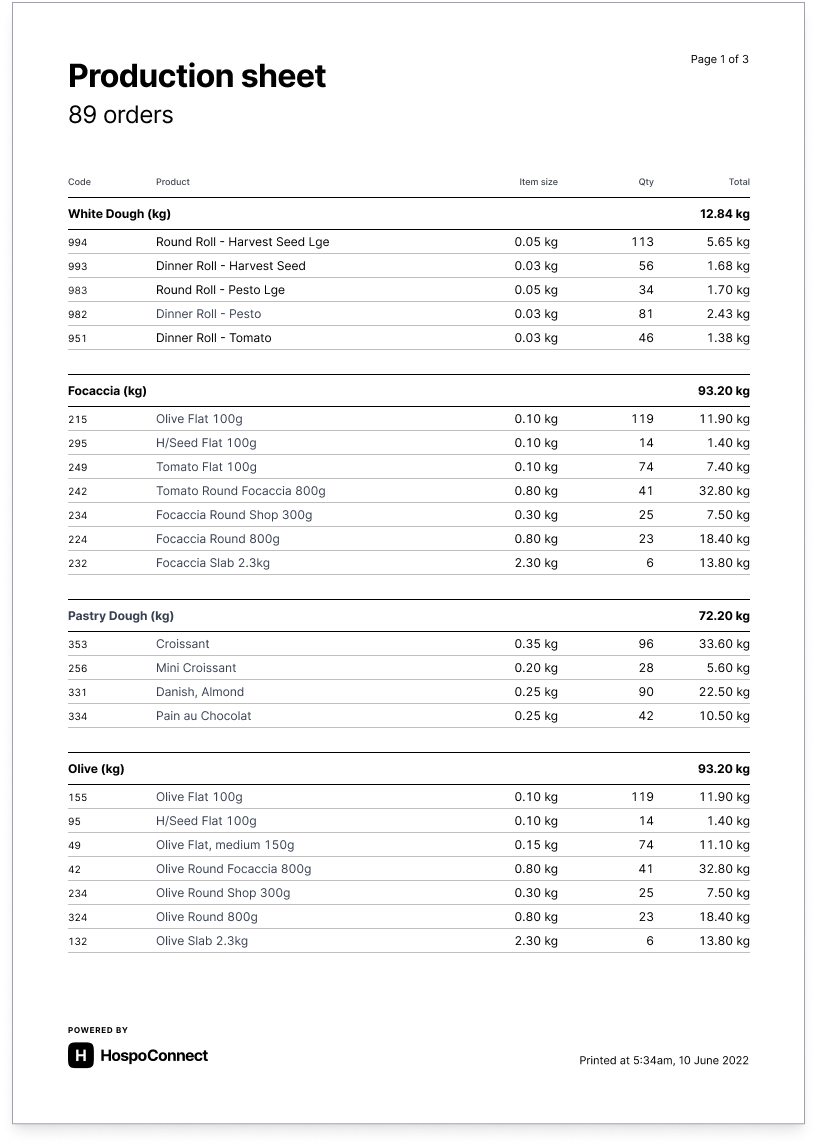Create a Production sheet

Select orders
First, select the orders you want to include in the Production sheet. Tips to select orders quickly:
- Use filters to ensure you’re selecting all the orders you need. As an example, you might choose to show all orders with a ‘New’ status and with a today's Delivery Date.

- Once you’ve applied the correct filters, click the Select All checkbox at the top of the orders list. The orders list shows a maximum of 100 orders at a time, but you can navigate to the next page and continue to select orders until you've selected them all.

Print or Download
- Print: With all of your orders selected, click the ‘Print’ icon at the top of the orders list and choose ‘Production sheet’. A window will appear with print settings; check these and hit ‘Print’.
- Download: With all of your orders selected, click the ‘Download’ icon at the top of the orders list and choose ‘Production sheet’.

Source categories
Group your products into source categories if you need to tally up the total across a set of related products on the production sheet. The following example is helpful.
Item size
Refers to the amount of the source category that a single item requires.
Note: When a source category requires an item size, products included must only have one allowed ordering unit. This means that customers can only choose one unit (eg, ‘each’) when ordering these products. You can edit this when editing a product.
Unit
Either kg (kilogram) or L (litre). Unit is only required if item size is switched on. This unit does not have to match the ordering unit of a product. For example, a product may use ‘each’ for its ordering units and ‘kg’ for the source category it belongs to.
Add a source category
- Go to Settings > Source categories.
- Click the Add new button in the top right corner.
- Give the new source category a name, choose if it should have an item size, and choose the appropriate unit (either ‘kg’ or ‘litre’).
- Add products by clicking Add product. In the products window which appears, click the Add button on each product you wish to add. When you’re finished adding products, click Done.
- If you’re using item sizes for this source category, fill out the item size field for each product. It represents the amount of the source category (eg, bread dough) is required to make a single unit of this product (eg, hamburger bun).
- Click Save.
Sorting
Source categories and their products can be sorted into the sequence that best works for your production workflow.
- Sort source categories: On Settings -> Source categories, tap the sort icon (up and down arrows) on top of the list of source categories. Click and drag the rows into the correct order. Click ‘Done sorting’ when done.
- Sort products within source categories: Select the source category, and click ‘Edit’ to the right of the source category’s name. Click and drag the product rows into the correct order. Click ‘Save’ when done.
